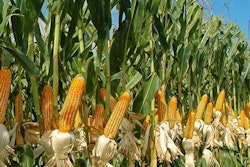USDA Crop Progress: 32% of U.S. corn acres still to plant; Record Low
- The USDA’s June 3 crop progress report showed strikingly and historical low planting levels for corn. 32% of the U.S. corn crop, or 29.696 million acres is still left to planted headed into the June 5 prevent plant dates for the eastern corn belt.
- Eastern corn belt GFS 5 day model runs showing material precipitation for key growing states.
- The planting pace in Ohio, Indiana, Illinois, Wisconsin, Minnesota, Iowa and South Dakota are all at historically slow rates leaving millions of acres unplanted.
- The current pace combined with other variables like weather and insurance based economics should force the USDA to adjust their planted/harvest acres figures and the yield estimated in the June WASDE.
- Reported planted soybean acres at 39% was a historical slow pace for the week.
- All major producing states are either at, or approaching historical lows.
- The USDA reported their first crop condition scores for spring wheat. All major producing states: Minnesota, North/South Dakota, and Montana all have 0% classified as “very poor” and 1% classified as “poor.”
- Hard and soft wheat scores show some weakness after last week but overall the HRW scores remain strong.
- What It Means For The US Farmer: At FBN we believe that the corn and soybean scores are bullish. However we also believe that the 2018/19 demand side of the corn and soybean equations are bearish. We believe that a strong U.S. dollar, a lackluster corn export program and slowing demand structure in China present headwinds for the U.S. corn and soybean balance sheets. There is still a long time until harvest but we believe that the developing story can be supportive U.S. corn.
Russian Wheat Production Lowered by .8 MMT to 82.6 MMT
- Citing dryness and above average heat agri-consultant, SovEcon, lowered Russian wheat production by .8 MMT to 82.6 MMT.
- 2018/19 Russian wheat production was 71.2 MMT.
- SovEcon also downgraded its estimate of Russia's grain exports in the new 2019/20 marketing year, which starts on July 1, by 700,000 tonnes to 48.7 MMT. The wheat export forecast was cut by 500,000 tonnes to 37.7 MMT.
- Russian winter and spring wheat conditions have been ideal headed into June leaving ample amounts of moisture in the soil.
- Russian winter wheat is entering the heading stage with the harvest starting in July.
- What It Means For The US Farmer: We believe that recent Russian wheat forecast can be beneficial to the U.S. farmer. The weakening of the Russian ruble combined with appreciation the HRW futures curve has compressed Russian/U.S. FOB spreads making U.S. wheat uncompetitive against Russian wheat. At FBN we maintain that these are not supportive for the U.S. export program.
The risk of trading futures, hedging, and speculating can be substantial. FBN BR LLC (NFA ID: 0508695)









